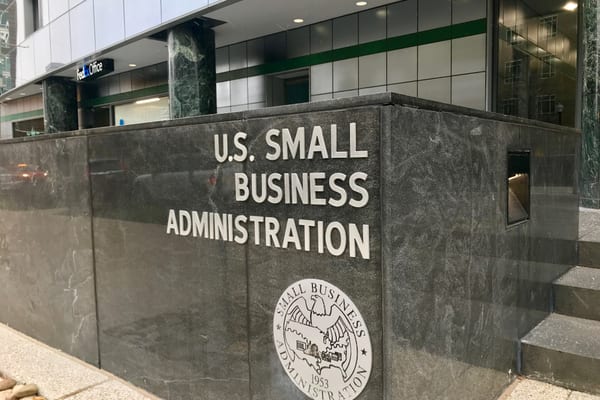PPP’s Rocky Rollout Compounds Crisis for Small Businesses
The rollout of PPP loans has been marked by confusion and exasperation, with borrowers and lenders alike struggling to navigate the process.
UPDATE (April 25, 2020): On Friday, President Trump signed a new coronavirus relief package into law. The measure includes an additional $310 billion for the Paycheck Protection Program (PPP). The Small Business Administration will resume accepting PPP loan applications on Monday, April 27.
UPDATE (April 16, 2020): On Thursday, the Small Business Administration announced that, for the time being, it was unable to accept new applications for the Paycheck Protection Program, as the program had exhausted its initial $350 billion funding capacity.
Original Article
Small businesses are the heart and soul of the American economy and collectively employ many tens of millions of people. On April 3, the Paycheck Protection Program (PPP), part of the broader CARES Act, went live. The program aims to provide access to much-needed capital to fund payroll as required to retain and rehire employees.
Unfortunately, the program’s rollout has been marked by confusion and exasperation, with borrowers and lenders alike struggling to navigate the process. Business owners fear making monumental decisions with inexact information and opaque guidelines while their companies’ futures are on the line.
On the one hand, companies want to maximize their potential loan amount. On the other hand, companies need to be prudent when analyzing how to spend the funds in order to maximize the amount forgiven.
A Lifeline, Not an Enduring Solution
In its current form, the PPP supports companies for approximately eight weeks. As such, it is essentially a lifeline to help small businesses survive the ongoing health and economic crisis. A second stimulus package appears inevitable, and the Treasury is already discussing an additional $250 billion.
The anticipated shortfall might be threefold. First, the stifling economic conditions will more than likely last longer than eight weeks. Second, not enough companies will get access to PPP loans, and those that do might not get enough funding. Third, and perhaps most concerning, companies that “survive” will need capital to help jumpstart operations, build up working capital, and reengage customers. Many businesses will be starting from a dead stop due to the shelter-at-home measures.
Tough Questions on Implementation
Responsibility to implement the program rests with the Small Business Administration (SBA) and federally-approved banks. Within days, requests overwhelmed banks that now face the daunting task of “selecting” who gets access and who does not. Who will the banks pick—first in line, those with the biggest customers, the most profitable customers, or the businesses most in need? A hoarding mentality is only natural, as companies rush to secure a lifeline or a potentially “free” source of capital.
Fast forward a few weeks when companies who have won the lottery have their PPP funds in the bank. The million-dollar question—the wrong answer might literally cost a million dollars—becomes how do you calculate the loan forgiveness amount? Maybe more importantly, how does a business owner decide to spend the loan on payroll for employees who cannot work or for which there is not enough work?
If you own a shuttered restaurant, should you use the loan proceeds to pay workers to sit at home? If you are a manufacturer, should you pay employees to stand by assembly lines producing little or no products?
What Comes Next?
PPP loans are ostensibly a replacement for unemployment insurance programs; however, the liability sits with the business owner if the forgiveness equation is unfavorable. Therefore, the business is saddled with a debt burden on top of depressed revenues and slashed profits.
The coronavirus pandemic created an economic crisis. It would be tragic to exit the pandemic with small business owners facing a different crisis, having paid workers not generating products or services and resulting in many small businesses entangled in the shackles of debt obligations.
Will the SBA unlock the debt obligations? Will they provide a stimulus package to save businesses from the first package? Only time will tell. In the interim, small business owners should sharpen their pencils and dust off analysis tools before spending the PPP funds they are currently working so hard to obtain.
This article is the second installment in our series examining the impact of government programs designed to support small businesses affected by the coronavirus pandemic.
Read more from our blog:






